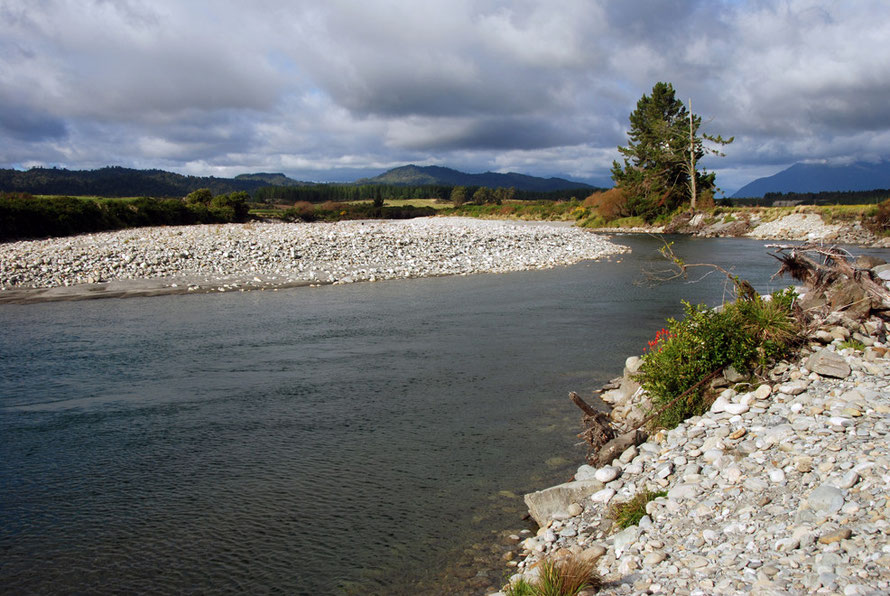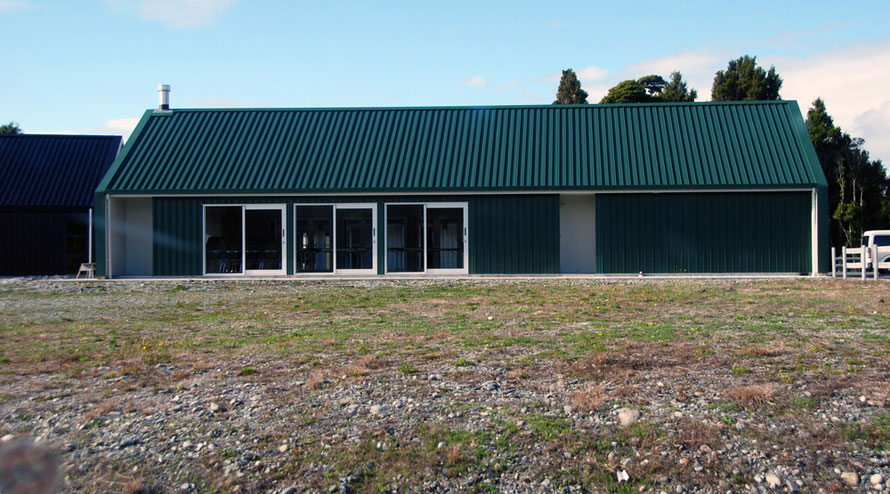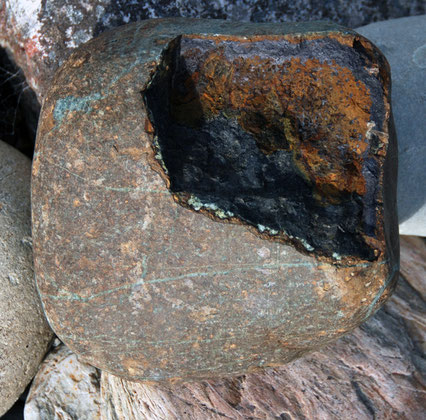IV. The Arahura Deed 1860

The Arahura Deed of 1860 detailed the surrender by the Maori hapu of the West Coast, the Poutini Ngai Tahu, of their customary title to nearly three million hectares in return for £300 in cash (£12,948 at 2005 UK prices) and 4,138 hectares in reserves. (For the distinction between iwi and hapu see The Ngai Tahu Settlement.)
This agreement was made between the Crown's Assistant Native Secretary, James Mackay and leading Poutini chiefs after two months of wrangling.
Amazingly Mackay returned to the administration with £100 of change from the £400 he had been authorised to pay for the land.
It took Mackay six weeks to reach the Grey/Mawherea rivermouth from his starting point at Nelson (now a road distance of 178 miles). He was accompanied by three 'natives', Tamati Pirimona, Hori te Korama, and Puaha te Rangi. The journey through virgin bush was arduous and Mackay seriously injured his knee.
Having made his travels further down the coast he was able to conclude a 'deal' with the chieftains. Initially the chiefs wanted £5000 against the Crown's offer of £150. And whilst Mackay attests to the chiefs' knowledge of land prices and full value payment Mackay still seems to have prevailed with a bargain price.

In a letter of 21st September 1861 addressed to the Chief Land Purchase Commissioner in Auckland Mackay states,
It is to be hoped that now the Native Title over the West Coast districts has been extinguished, and that as available "gold and coal-fields" have been discovered there, it may attract a
population to its long neglected valleys, and add its quota to the general wealth of the Colony. http://nzetc.victoria.ac.nz/tm/scholarly/tei-Mac02Comp-t1-g1-t3.html
In an interesting correspondence after the signing of the deed the issue of the Crown's right to make roadways through the 2000 acre Arahura reserve land became an issue. Mackay seems to stand up for the Deed and argue that The Crown could not simply place a network of roads across the 2000 acres at its convenience, or at least not without recompense.
Talk about fiddling while Rome burns: having done the big 'deal' and divested the Poutini Ngai Tahu of their 'Native Title' over three million hectares at a price of less than half of one UK 2005 pence per hectare there were some in the Governor's office who were of the opinion they could go on eating away with impunity at the scraps of land that the Ngai Tahu had been left with.
Interestingly, in the landmark settlement with the Crown (see below) there is a small section in the Cultural Redress/Ownership and Control/Four Specific Sites/Arahura Valley that returns to that issue of roads. The relevant section says,
A number of legal but unformed roads within the middle section of the Arahura Valley will be closed. The title to those roads will be vested, at no cost to the tribe, in the Mawhera Incorporation as Māori freehold land, subject to a number of easements which provide legal access to all of the sections of private land in this area.

This was a process that was to continue in the 1890s and first decade of the 20th century.
Under the leadership of Prime Minister John Seddon the Liberal government began a process of breaking up the concentration of European land ownership in massive sheepruns where one per cent of the landowners owned 64 per cent of the land.
The policy broke up some 223 estates, which were fully compensated, and allowed the settlement of 7,000 farmers.
Spearheaded by John 'Honest Jock' McKenzie, a Gaelic-speaking Highlander who also crafted the 1892 Land Act that gave all New Zealanders access to rivers, forest and mountains the process of land reform stopped with New Zealand's 'natives':
'Oddly, though [McKenzie's] first-hand memories of the Highland clearances did not prevent him from taking every opportunity to part North Island Maori from their land' (King, History of New Zealand, p. 272).

The Arahura Deed was of course incredibly important because it opened up the way for the settlement of the West Coast as land pressures built up on the South Island.
A letter from the Poutini chiefs of 1857 to the government had set out their willingness to sell the land for £2,500. In this they specified that they wanted to protect their rights to the pounamu (greenstone) of the Arahura River. However, when the land was sold in 1860 those rights were ignored (Teara.gov.nz).
The sale of this huge tract of land also, of course, facilitated the forthcoming West Coast gold rush and presumably transferred the mineral rights and any revenues arising from the taxation of extracted minerals to the Crown.

With regard to the Arahura River and reserve limited redress was achieved in 1976 when the Crown vested the title to the bed of the Arahura River in the Mawhera Incorporation, a Māori landowners Trust. This became part of the larger Ngai Tahu Settlement of 1996.
The Ngai Tahu has fought back against the breaches of contract made by the Crown after the sale of 34 million acres of the South Island - this involved the Crown failing to allocate 10% of the land to the Ngai Tahu who became virtually landless in their own land.
When Ngāi Tahu first took its case to the courts, in 1868, the government passed laws to prevent the Courts from hearing or ruling on the case. A Commission of Inquiry a decade later – the Smith-Nairn Commission - had its funding halted by a new Government and went into recess without delivering any findings despite positive progress reports.
It was not until the Waitangi Tribunal got teeth (see my page The Treaty of Waitangi) that things began to move in the Ngai Tahu's favour.

